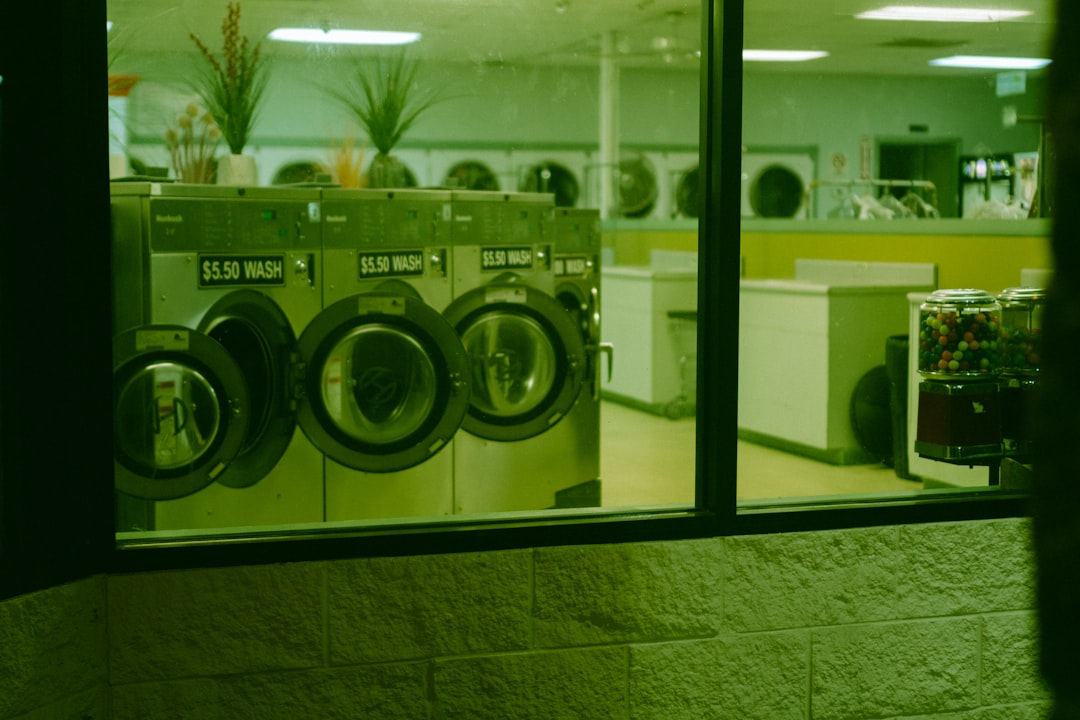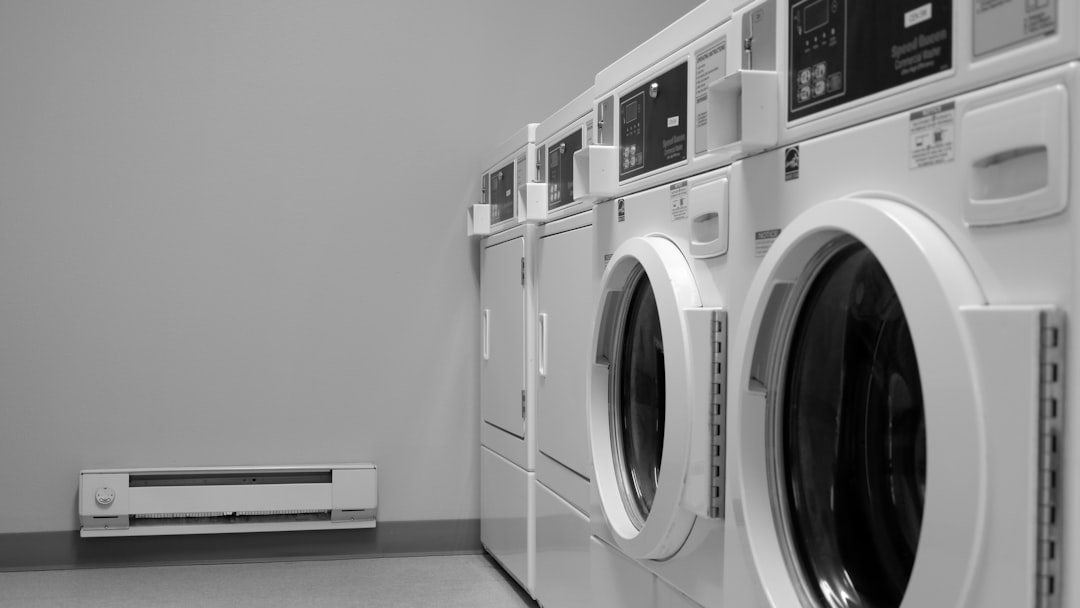

Engage prospects with a scan and streamline customer engagement with FREE QR code marketing tools by Sona – no strings attached!
Create a Free QR CodeFree consultation

No commitment

Engage prospects with a scan and streamline customer engagement with FREE QR code marketing tools by Sona – no strings attached!
Create a Free QR CodeFree consultation

No commitment
QR codes have become an essential strategy for laundry supply companies seeking to bridge offline and online customer engagement. As suppliers aim to enhance order processing, information access, and sustainability transparency, QR codes provide a seamless, app-free way for both B2B partners and end users to engage and transact, reducing friction at every touchpoint.
The laundry supply industry relies heavily on physical materials such as packaging, order forms, and product manuals, leading to persistent challenges in converting offline interest into measurable digital action. Missed high-value prospects, lack of visibility into anonymous traffic, and disconnected engagement are common pain points. Traditional methods like printed catalogs, manual inventory checks, and paper-based customer surveys often slow operations, obscure key signals, and restrict proactive engagement, resulting in lost opportunities and inefficient resource allocation.
By strategically using QR codes, laundry supply companies can modernize their workflows, capitalize on hidden opportunities, and capture important engagement data. Customers gain instant digital access to ordering, documentation, and sustainability details, while suppliers collect actionable insights for smarter segmentation and revenue growth. The following blueprint shows how QR solutions can maximize operational efficiency and customer experience for the laundry supply sector, turning every interaction into measurable progress.

QR codes bridge the gap between physical touchpoints and digital outcomes, allowing laundry supply companies to move beyond outdated manual processes that often result in missed or delayed responses and lost prospect information. They transform every printed asset into a data-backed gateway that captures intent and routes customers to the right action in seconds.
Replacing analog friction points starts with mapping current workflows. Printed catalogs, paper order forms, and static safety sheets make it impossible to know who engaged, when they engaged, and what they wanted. QR-enabled ordering pages, dynamic SDS hubs, and trackable feedback forms resolve these gaps while preserving the convenience of physical materials.
When executed well, this approach replaces slow, manual workflows with responsive, measurable experiences. It gives sales and operations the visibility they need to act quickly, while giving customers a faster, more reliable way to get what they need without calling, emailing, or finding the right URL.

Laundry supply companies operate in environments where timing, accuracy, and compliance are critical. Static print materials are often outdated soon after they are produced, and paper-based data collection removes essential context from the customer journey. Without insight into who is interacting with packaging, safety sheets, or invoices, high-value opportunities remain invisible and unaddressed.
QR codes resolve these issues by making every physical asset interactive and measurable. They allow teams to update content without reprinting, prompt immediate action at the point of need, and capture the engagement signals that have traditionally been lost. For suppliers managing a mix of distributors, service teams, and business accounts, this visibility is essential to operational reliability and growth.
For companies grappling with fragmented signals and disconnected touchpoints, QR codes create a unified, traceable engagement layer. They deliver both customer value and operational intelligence in one scan.

Selecting the right QR code format matters because different actions require different levels of control, security, and measurement. Laundry supply workflows range from reorders and support requests to compliance and training, so code formats should align with the expected user action and data needs.
Dynamic QR codes are the default for most operational use cases because they enable content updates and detailed analytics without reprinting. Static codes can be appropriate for evergreen resources that will never change, like a permanent Wi-Fi network configuration. The key is to match the code type to the business objective and lifecycle of the asset.
With centralized management in a platform like Sona QR, teams can create, tag, and update every format in one place. That consistency makes it easier to enforce naming conventions, secure links, and maintain accurate reports over time.

Growth is often hiding in plain sight. For laundry supply companies, the highest-impact QR placements are those that intersect with frequent customer actions, recurring paperwork, or compliance-sensitive workflows. Each of these touchpoints already attracts attention in the field, which means a scan is the most natural next step.
Focus first on placements with high visibility and high intent. Packaging, delivery slips, service tags, and trade materials are all prime candidates because they show up exactly when buyers are evaluating, ordering, or troubleshooting. Turning those moments into measurable actions compounds results across marketing, sales, and operations.
Thoughtful placement turns every asset into an acquisition or retention lever. As scans accumulate, you unlock a continuous loop of insights that guide better creative, better offers, and smarter follow-up.

The strongest QR deployments align with specific business objectives and map cleanly to the buyer journey. Laundry supply companies typically prioritize faster reorders, bulletproof compliance, and sustained account growth. The following use cases are proven to move the needle on those goals.
Begin by piloting one or two use cases where measurement and ROI will be obvious. Once you validate impact, expand to adjacent workflows and standardize your approach across teams and regions.
Integrating these use cases builds a consolidated view of account behavior. Instead of guessing which materials or offers matter, you respond to live engagement with precise, timely actions.
Every QR scan is an intent signals. When you tag scans by context and action, you can automatically build audiences that map to funnel stages and buyer roles, then orchestrate follow-up that reflects what each person actually did. This replaces generic nurture with behavior-informed sequences that convert more efficiently.
Laundry supply segments often include facility managers, laundry operators, purchasing agents, and environmental health and safety roles. Knowing which role scanned a code for SDS versus a reorder form helps tailor messaging and strengthen account penetration.
With Sona QR, each code becomes a structured data source, and each scan routes into the systems that run your funnel. This lets marketing, sales, and service coordinate seamlessly around the same intent signals.
QR codes are connective tissue for campaigns that span print, in-person, and digital channels. They make offline efforts measurable, unify messages across touchpoints, and accelerate next steps without adding friction or requiring new apps.
In laundry supply, where brochures, delivery paperwork, trade events, and service visits all play a role in revenue, QR-enabled journeys keep your story consistent. The same themes and offers follow buyers from the warehouse to the web, ensuring no interest goes untracked and no customer is left waiting for information.
Centralized QR analytics, especially with Sona QR, ensure these channels reinforce one another. All scan events feed a single source of truth, enabling you to attribute outcomes, scale what works, and refine creative with confidence.
Launching QR code initiatives is most effective when you treat them like performance campaigns. That means clear goals, thoughtful design, controlled rollouts, and disciplined measurement. Use the following steps to move from concept to proven results without unnecessary complexity.
Resist the temptation to scatter codes everywhere immediately. Instead, pick a high-impact workflow, prove the value, and then scale methodically. This approach builds internal momentum, creates reference wins, and ensures your data model is right from the start.
Start with a defined business problem to solve. Reorders taking too long, compliance documents going unread, or feedback not making it back to the team are all strong candidates. Select a use case where you can see impact quickly and where stakeholders are motivated to test something new.
Document the specific outcome you want to improve and how you will measure it. For example, reduce average reorder time from four days to two, increase SDS acknowledgment rates to 95 percent, or double feedback response rate on delivery slips. Align on the metric with sales, operations, or compliance leads so everyone rallies around the same goal.
Choose between static and dynamic codes based on flexibility and tracking needs. Static is acceptable for permanent, never-changing resources, but most laundry supply use cases benefit from dynamic codes that allow edits, A/B tests, and detailed analytics.
Map code types to destinations and measurement early. Use dynamic codes for reorder flows, compliance hubs, event lead capture, and training materials. Use static codes only when you are sure the destination and content will not change.
Design your QR assets for scannability and trust. Include a clear benefit-driven call to action and a frame or caption that tells users exactly what they will get. Brand elements like color and logo can be incorporated as long as contrast and quiet space remain sufficient for reliable scanning.
Test in real conditions before going live. Scan from multiple devices, at different distances and angles, and under varied lighting. If the code will go on curved or textured surfaces like drums or bags, ensure the size and placement still scan quickly.
Deploy to high-impact locations that align with your growth plan. Packaging, invoices, trade materials, and service tags are typically the best starting points. Coordinate with operations to ensure codes remain visible through handling, storage, and transit.
Localize where relevant. Regional promotions, language preferences, and product availability can influence destinations. Dynamic codes let you route the same printed asset to different experiences based on rules like geography or device.
Create a reporting cadence that moves from scans to business outcomes. Track not only scan volume but also conversion rates, time to action, and revenue influenced. Compare performance by placement, creative, and audience segment to find the highest-leverage improvements.
Iterate continuously. Adjust CTAs, reposition codes, update landing pages, and test incentive structures such as small discounts or loyalty points for scanning. Share insights with sales and operations so they can reinforce top-performing behaviors in the field.
Following this process ensures each QR initiative delivers incremental value and avoids becoming just another unmeasured touchpoint.
Attribution has long been a blind spot for print-heavy workflows. Knowing a catalog or label was seen tells you very little. With QR codes, you can connect the first moment of interest to pipeline and revenue, as long as you capture the right metadata and integrate it into your systems.
A disciplined analytics approach begins with link hygiene and consistent tagging. Every QR destination should include UTM parameters for source, medium, campaign, and placement. Dynamic codes should also carry internal attributes like audience intent, role hypothesis, and asset type. This context turns scans into insights you can act on.
Modern analytics tools make it practical to tie offline engagement to tangible outcomes. This capability is essential for proving ROI, reallocating budget to top performers, and building executive confidence in scaling QR programs.
Sustained performance comes from continuous learning and thoughtful scaling. As you add QR codes across assets and regions, standardize your approach to tagging, reporting, and follow-up so each scan strengthens your data foundation rather than adding noise.
Consider the audience experience at every step. QR codes perform best when they offer immediate, obvious value. Make the promised action clear, keep landing pages fast and mobile-friendly, and ensure the next step is only one tap away.
Creative deployment examples reinforce both convenience and value. Put QR codes on chemical drums to enable one-tap reorders and immediate SDS downloads. Label eco-friendly packaging with Scan for our footprint and recycling guidance to support sustainability-minded buyers while building a segment for future green initiatives.
QR code success stories in laundry supply often share a common thread: teams place codes where work happens and align them with actions people already want to take. The result is higher participation, fewer delays, and measurable growth that compounds as programs scale.
Consider these patterns as inspiration for your own pilots. You do not need to reinvent the wheel; you just need to match QR-enabled actions to existing moments of intent and then measure the results carefully.
These examples underscore a simple principle: when you make the right action easy and measurable, customers reward you with engagement and loyalty.
Rolling out QR codes at scale is part design craft, part operational discipline. Learning from others accelerates success and helps you avoid common mistakes that can undermine adoption or data quality.
Balance ambition with practicality. Launch where the business case is strongest, make sure the user experience is excellent, and build a reporting loop that everyone trusts.
Adopt these insights to strengthen your initial launches and to guide continuous improvement. Small design tweaks and process refinements often deliver outsized gains.
QR codes are now a strategic pillar for laundry supply companies. They convert every label, slip, and brochure into a responsive entry point that drives action and captures intelligence. With the right tools and process, you can connect offline interest to online outcomes, unify data across teams, and prove revenue impact with confidence.
The path forward is straightforward. Start with a high-impact use case such as digital reordering or SDS access. Choose dynamic codes, instrument analytics rigorously, and integrate scan data into your CRM. Then iterate: refine CTAs, optimize placements, and expand to adjacent workflows once results are clear.
Sona QR helps you generate, manage, and measure QR codes at scale. Sona.com extends that value by tying scans to pipeline and revenue through multi-touch attribution and identity resolution. Together, they give laundry supply teams a complete stack for turning physical engagement into measurable growth.
QR codes unlock new digital possibilities for laundry supply companies, making every product, form, and touchpoint a data-driven gateway to service and sales. Start creating QR codes for free.
QR codes have revolutionized laundry supply companies by transforming how they connect with customers and streamline operations. By enabling instant access to product information, usage guides, and replenishment services, QR codes enhance customer convenience and drive smarter inventory management. Imagine empowering your clients to reorder supplies with a quick scan or access troubleshooting tips on the spot—boosting satisfaction and loyalty while reducing friction.
With Sona QR, laundry supply companies can create dynamic, trackable QR codes that update instantly without costly reprints. Every scan captures valuable engagement data, linking offline interactions directly to sales and operational insights. This means more efficient customer acquisition, improved service experiences, and actionable intelligence to grow your business.
Start for free with Sona QR today and turn every scan into a streamlined solution, a loyal customer, or a measurable business win.
The article does not list specific companies but focuses on how laundry supply companies can use QR codes to improve operations and customer engagement.
Integrate QR codes by auditing analog processes, embedding codes at key touchpoints like packaging and invoices, defining success metrics, optimizing placement and messaging, instrumenting tracking, and automating follow-ups using platforms like Sona QR.
Laundry supply companies use mobile marketing by deploying QR codes that link customers to digital reordering, compliance documents, support requests, and promotional content, enabling app-free, instant access and measurable engagement.
Creative uses include placing QR codes on chemical drums for quick reorders, eco-labels for sustainability info, delivery slips for feedback and payments, trade show materials for lead capture, and equipment tags for service and troubleshooting.
Benefits include instant access to ordering and documentation without apps, faster issue resolution, dynamic content updates, reduced delays, simplified compliance, and overall improved convenience and service reliability.
Use Sona QR's trackable codes to improve customer acquisition and engagement today.
Create Your FREE Trackable QR Code in SecondsJoin results-focused teams combining Sona Platform automation with advanced Google Ads strategies to scale lead generation

Connect your existing CRM

Free Account Enrichment

No setup fees
No commitment required

Free consultation

Get a custom Google Ads roadmap for your business






Launch campaigns that generate qualified leads in 30 days or less.
